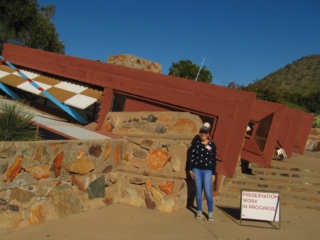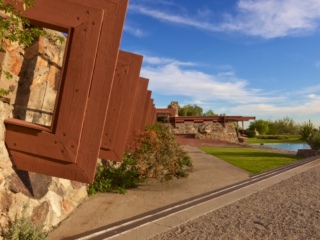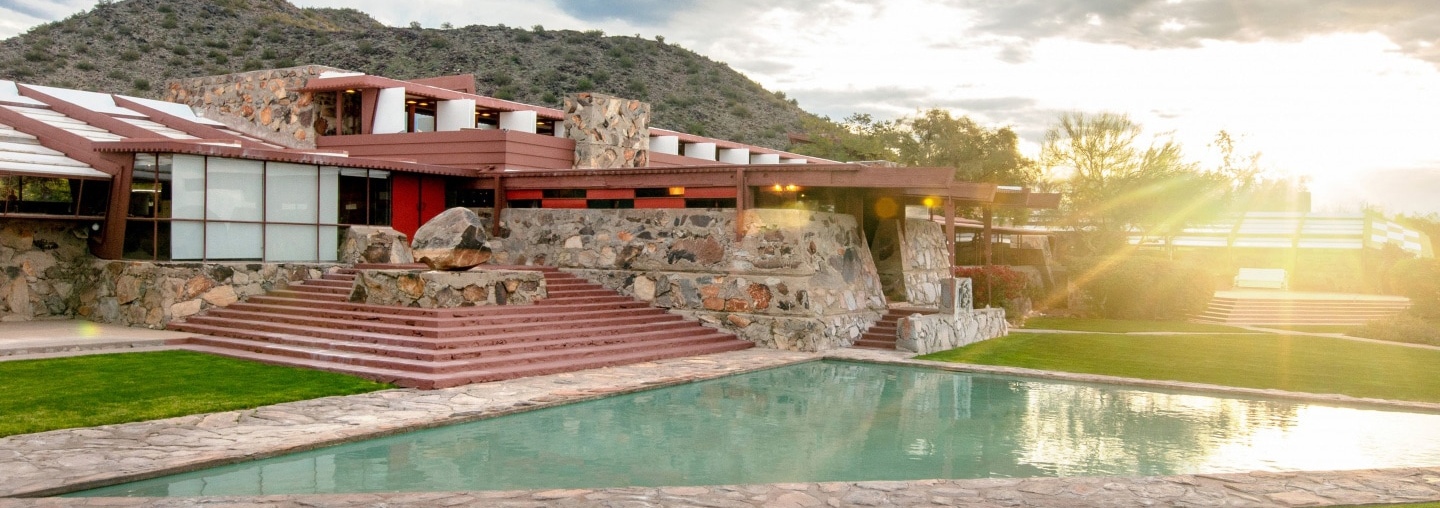
Taliesin West Gets New Accessibility Upgrades
Frank Lloyd Wright Foundation | Jul 18, 2020
Taliesin West, the UNESCO World Heritage site that served as Frank Lloyd Wright’s winter home in Scottsdale, Arizona, recently completed ADA upgrades that will make the historic property more accessible than ever before.
Frank Lloyd Wright’s winter home was built more than 50 years before the Americans with Disabilities Act (ADA) came to fruition, without the codes and regulations that exist today. Tight spaces and changes in level that are difficult or impassable for those with limited mobility, like that of the character-defining terraced levels and unique doorways at Taliesin West, have made accessibility at the historic desert location a hurdle to overcome.
During the COVID-19 pandemic while Taliesin West remains closed to visitors, the Foundation has prioritized efforts and dedicated funds towards making the site’s public spaces more available to all visitors with a focus on ramps, handrails, surfacing and restroom additions. The Foundation’s preservation team has utilized $250,000 in challenge grant funding from the National Endowment for the Humanities, combined with generous matching grants from the Pakis Family Foundation and the Christopher & Dana Reeve Foundation, to complete the following ADA-compliant projects on an accelerated schedule:
-
Installation of stabilized, decomposed granite at the Prow, the Entry Court, and walking paths
Stabilized, decomposed granite, an approved surface that closely resembles the dirt material naturally present at Taliesin West, was installed to replace the pea gravel found in many of the public areas around the property, providing an attractive and navigable surface for visitors with restricted mobility.
-
Installation of two custom concrete ramps at the east and west end of the Prow
Two custom-designed concrete ramps were installed at both ends of the Prow to allow guests to experience the most iconic view at Taliesin West. as well as a pathway to an accessible restroom.
-
Installation of a custom metal ramp from the Entry Court to Wright’s Office
A metal ramp custom-designed to blend into the site’s desert masonry walls, while still preserving the original concrete landscape, was installed between the Entry Court and Wright’s Office.
-
Installation of two custom handrails at the Breezeway and Cabaret Staircases
Two new handrails custom-designed to limit visual intrusion will provide support for guests traversing low-rise steps located at the Breezeway and between the Cabaret and Pavilion terraces.
-
Accessible Restrooms
An existing restroom was retrofitted to offer guests an accessible restroom for use during daily tours or events held on the Prow.
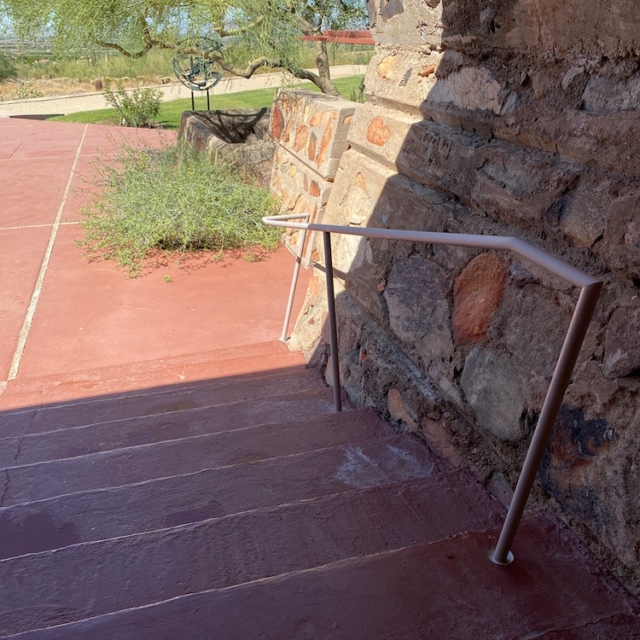
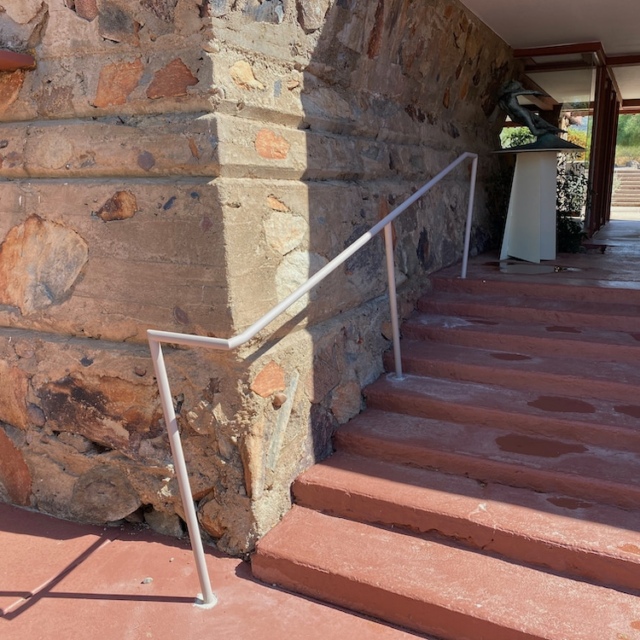
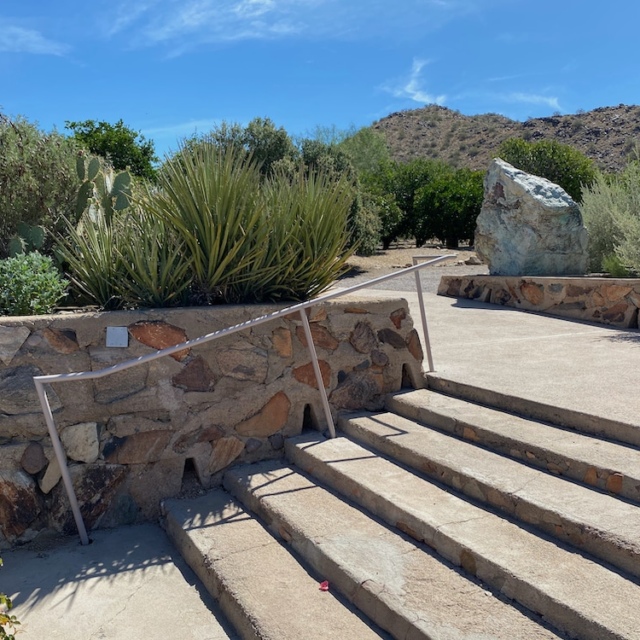
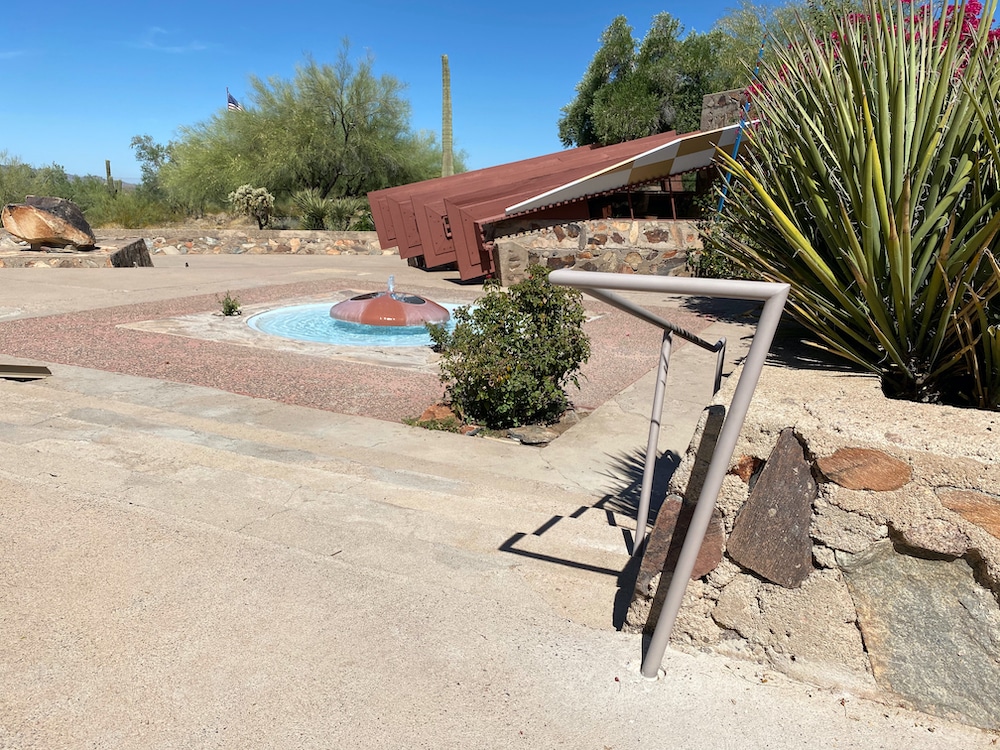


“Our preservation team has used this time wisely in order to expedite the necessary measures to make Taliesin West accessible to all,” said Frank Lloyd Wright Foundation Director of Preservation Emily Butler. “Some of the work that has been done is not required by the ADA since this is a historic site, however the Foundation has gone above-and-beyond. A great amount of thought was put into selecting materials and colors for each installation that complement Wright’s original look and feel. Our primary objective is to not take away from the historic or architectural character of the property, yet make it more accessible to visitors of all physical capabilities.”
In addition to the recently completed upgrades, a number of ventures at Taliesin West are still currently underway, with completion scheduled just in time to welcome visitors back this fall. Guests can expect to find ADA-compliant restrooms in three additional locations including one near the Kiva and two in the Music Pavilion where most of the performing arts presentations are held.
“The Frank Lloyd Wright Foundation wants to make sure that everyone has access to visit Frank Lloyd Wright’s own home, Taliesin West, and experience his work so that they can bring it into their own lives and benefit from his ideas. We are committed to making sure our site is available to as many people as possible, going beyond legal requirements to do what’s right,” said Stuart Graff, president & CEO of the Frank Lloyd Wright Foundation. “We have taken this opportunity while the facility is closed to accelerate our accessibility work, adding new ramps and handrails, traversable surfaces, and accessible bathrooms, to make sure that Wright’s laboratory in the desert is welcoming and available for more people. We’re also using this time to identify ways that we can break down other challenges beyond physical mobility to provide a more inclusive experience to all at this UNESCO World Heritage site.”
The Frank Lloyd Wright Foundation is reliant on donations and memberships in order to complete important preservation work at Taliesin West in Arizona and Taliesin in Spring Green, Wisconsin. Financial assistance from the community is of the utmost importance during this extremely challenging time.


